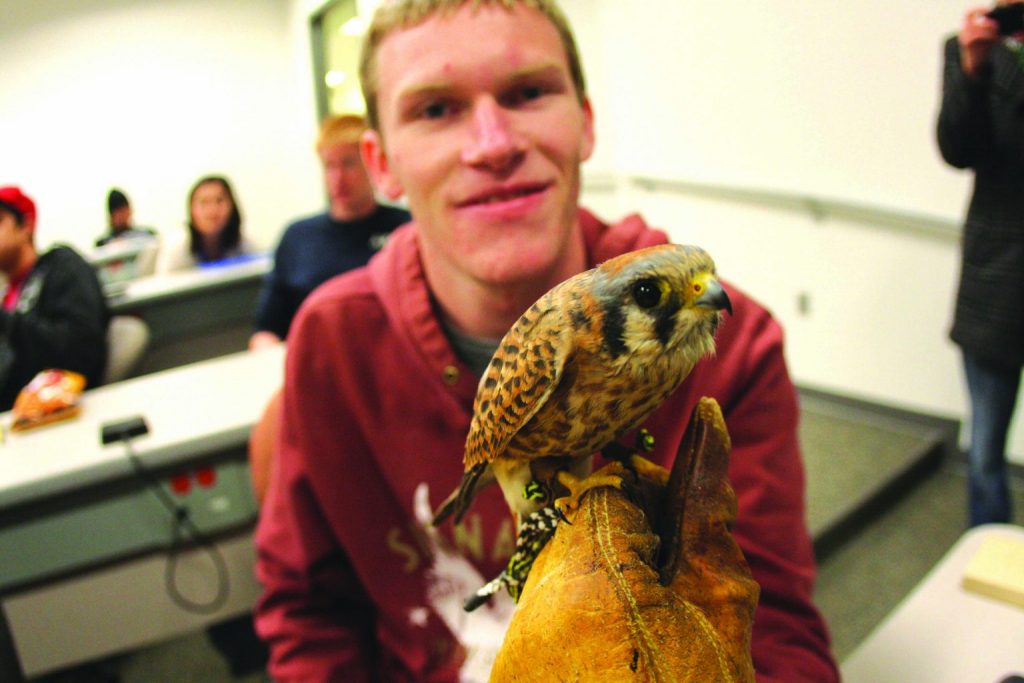Raising a falcon

This archived article was written by: Valeria Moncada
“Do not get attached to something that does not get attached to you,” said Josiah Safley. He is 21 and has his Falconer’s license. He began training birds at 18 and has trained four birds within the last two and a half years.For Safley, it took five years to receive his Falconer’s license. The steps aren’t so simple; you go to the division of DWR and take a test. Then they give you a paper that lists the rest of the steps. In order to receive this license, there must be a building that is safe for housing birds; then someone has to inspect it. After that, the person must have a spon-sor for two years. Once the process is done, you have to wait on the state or the federal government to decide. “It takes a bit of money in order to have all the buildings and facilities and the equip-ment. It costs about $1,000,” he said.Safley has had four differ-ent birds: a Red-Tailed Hawk for a year and a half, a Prairie Falcon for six months, a Coo-per’s Hawk for four weeks (it was eight days old when it was taken out of the nest), then his last bird is the falcon he recently caught. He has had her for about two weeks. “You do get attached to the different personality of each bird,” Safley said. Seeker, the current Falcon that he trapped two weeks ago, is a drama queen. “She got angry at me because when I fed her, the mouse bit her toe. Now she thinks it’s my fault.” If you take a bird out of its nest when they are little, they can become sexually attracted to the person who captured them. “When you first feed a bird, they will not eat unless they start trusting you more. The first time is very excit-ing. It is a big major step in big major step in their training,” Safley said. “Everything you do with a bird is based off of trust. When you are able to touch a bird on the top of the head, or when it allows you to have two fingers behind the wings, that is a complete sign of trust.”
He likes to take his birds hunting with him. When he had his Red-Tailed Hawk, they would go out and he would allow the hawk, or Buster as his family called him, to chase rabbits. Buster would then kill the rabbit, take his share, then leave some for Safley. “We would share the spoils,” he said.
“Training birds is a lot of fun; so is having them around. But after a while, they just do the same thing and it does eventually get kind of boring. You can keep a bird for as long as you want, but when you set them free, you just take everything off of them and let them go.”
Buster was the first bird he was attached to. “I let him go near my house in Pleasant Grove and he followed my truck around for about a week.” The hawk was about four-months old when he caught him. The bird completely trusted Safley, “he would let me take photos with him and he would even let me touch noses with him.”
Not everyone can train a bird; it takes time, patience and most importantly, trust, he said.




